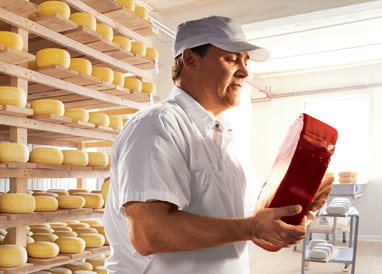A Preference of Credibility: Floridia Cheese Melbourne and Its Craftsmanship
A Preference of Credibility: Floridia Cheese Melbourne and Its Craftsmanship
Blog Article
Unlocking the Tricks of Artisanal Cheese Making: A Detailed Do It Yourself Guide
In the world of culinary craftsmanship, artisanal cheese making stands as a testament to the fragile equilibrium between tradition and advancement. Each action in the process, from picking the right milk to refining aging methods, holds within it a wide range of knowledge passed down through generations. As we start this trip to debunk the art of creating charming cheeses, we are confronted with a tapestry of secrets and skills waiting to be deciphered. Join us as we check out the ins and outs of this old craft, where scientific research, perseverance, and art converge to produce flavors that tantalize the senses.
Picking the Right Milk
When getting started on the trip of artisanal cheese production, the selection of milk plays a crucial duty in identifying the top quality and attributes of the final product. The type of milk picked affects the taste, texture, and on the whole profile of the cheese.
When picking milk for cheese making, it is very important to consider the fat content. Greater fat web content in milk can lead to a creamier and richer cheese, while reduced fat content may bring about a drier and firmer texture. In addition, the source of the milk, whether from cows, goats, sheep, or buffalo, contributes distinctive tastes and characteristics to celebrity (Floridia Cheese). Each kind of milk brings its own subtleties, enabling a wide variety of cheese ranges to be crafted based upon the chosen milk. Inevitably, the choice of milk is a fundamental decision that sets the foundation for an effective artisanal cheese-making endeavor.
Culturing and Coagulating
To launch the cheese-making process, the essential actions of culturing and coagulating must be thoroughly performed to transform milk into curds and whey. Culturing includes introducing useful germs to the milk, which then begins the fermentation procedure. These germs transform lactose (milk sugar) into lactic acid, producing the acidic environment required for coagulation. The sort of culture made use of can significantly impact the taste, texture, and ripening of the final cheese product.

The timing and temperature control throughout culturing and coagulation are crucial factors that affect the final end result of the cheese. Proper implementation of these steps is vital to make certain the preferred appearance, flavor, and uniformity of the artisanal cheese being produced.
Draining Pipes and Pressing Curds
After the milk healthy proteins have actually coagulated and the curds have been reduced to release whey, the next crucial action in artisanal cheese making involves draining and pushing the curds to achieve the wanted texture and uniformity of the final cheese product. Draining pipes is the process of dividing the curds from the whey. This can be done by transferring the curds into a cheesecloth-lined bowl-shaped sieve or mold and enabling the whey to drain pipes off naturally. The moment for draining pipes can differ depending upon the sort of cheese being made and the wanted wetness web content.
Pushing aids eliminate any kind of continuing to be whey and compacts the curds to create a strong cheese wheel. Appropriate pressing and draining are important steps that significantly impact the top quality and features of the artisanal cheese Floridia Cheese Thomastown being generated.
Aging and Flavor Methods
Executing careful aging and flavoring techniques is pivotal in boosting the deepness and complexity of artisanal cheeses, elevating their preference accounts to splendid levels of improvement and refinement. Aging plays an essential role in creating the special flavors and textures that identify artisanal cheeses. During the aging procedure, cheeses are kept in thoroughly controlled settings where elements such as humidity, airflow, and temperature level are manipulated to motivate the growth of valuable mold and mildews and germs. This controlled setting allows celebrity to mature gradually, developing abundant flavors and complicated fragrances.
Flavoring methods additionally contribute substantially to the last taste of artisanal cheeses. Cheesemakers may select to present added flavors by incorporating components such as natural herbs, seasonings, and even fruits into the cheese throughout the production process. Furthermore, some cheeses are cleaned or massaged with numerous fluids, such as salt water or alcohol, to enhance their textures and flavors.
Covering and Saving Cheeses

Conclusion
In final thought, mastering the art of artisanal cheese making includes thoroughly selecting the ideal milk, adhering to exact culturing and coagulating processes, draining pipes and pressing curds successfully, and making use of various aging and flavoring methods. By following these steps faithfully and with attention to detail, you can develop your own tasty and special cheeses at home. Remember to wrap and keep your cheeses effectively to guarantee optimum taste and texture development. Delighted cheese making!
Each type of milk brings its own nuances, enabling for a broad variety of cheese ranges to be crafted based on the selected milk.After the milk proteins have coagulated and the curds have been reduced to launch whey, the following essential step in artisanal cheese making involves draining and pressing the curds to attain the wanted appearance and uniformity of the final cheese product. Many cheeses ought to be wrapped in wax paper or cheese paper to permit them to breathe while securing them from drying out. For cheeses that need to continue aging, such as bloomy rinds or cleaned peels, guarantee they are kept in an awesome environment like a cheese cave or a fridge established to the suitable temperature. By paying attention to the wrapping and storage space of artisanal cheeses, cheese manufacturers and enthusiasts can preserve the honesty of these specials and fully appreciate their intricate flavors.
Report this page